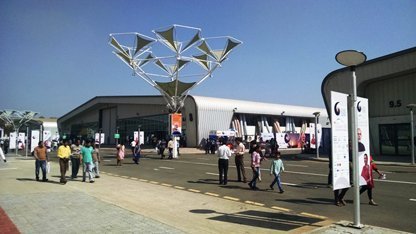Plastindia 2022 all set to open big

Standardization and consumer production packaging7 things to know about G7 and protecting make integrityWhether y'all're a printer or a make manager, color consistency is not-negotiable. You demand to be sure your prints are depicted accurately across multiple printing types and substrates – brand integrity depends on it. That's where G7 comes in.G7, IDEAlliance's industry-leading fix of all-time practices for achieving gray residuum, is a driving force for achieving a consistent appearance beyond any of the print engineering science, substrates and inks that are used for packaging. In essence, G7 raises the bar on the color matching operation to assist printers and brands achieve their color quality goals.
If y'all're considering means to improve your printed materials with G7, here are seven things y'all should know:
i. G7 is a global specification that is used to consistently hit clients' color targets, used by more than 1,100 leading print service providers, worldwide. Information technology might sound uncomplicated, but historical printing practices did not ever practise this. G7 does, and as a effect, information technology enables calibrated presses to create a unified, high-quality visual production.
2. The name G7 stands for 'Gray,' plus the 7 principal and secondary solid ink values — Cyan, Magenta, Yellow, Blackness (CMYK), and Red, Green and Bluish (RGB). By decision-making these elements, printers can more than precisely control production color.
3. Photography used gray scales for over a century to residue colour. G7 brings the same concepts to commercial press. Using the G7 method to calibrate a impress process produces a balanced print condition that is more repeatable and consistent.
4. More and more print buyers are making G7 a requirement to ensure consistent reproduction of pattern intent beyond marketing collateral, packaging and signage, regardless of the inks or substrates used.
5. While substrate, gamut and other print characteristics may be unlike, G7 aligns the greyness balance for each, giving all print types a common advent.
6. G7 creates a more than consistent printing condition across unlike press machines, printing technologies and materials. For CPGs, that ways greater sourcing flexibility across the print supplier base. For printers, that means greater flexibility in selecting the right tools and procedure to meet the customer'south price and performance requirements.
seven. Greyness balance is a powerful tool for managing print consistency. G7 makes it easy to include gray residue as part of a impress specification. Without G7, greyness balance is a specification nightmare because information technology is different for every process. Using G7, brand owners can specify a common gray residue value, enabling printers to evangelize a common advent across all the piece of work they produce.
At Schawk, nosotros take embraced the G7 method by assembling a team of certified G7 Experts in the field of color management, process and quality command for proofing and press equipment. Our G7 Experts piece of work directly with printing facilities to calibrate their proofing systems and presses, and train them to become qualified G7 Master Printers and provide amend service to their customers.
Source: https://packagingsouthasia.com/events/plastindia-2015-all-set-to-open-big/
0 Response to "Plastindia 2022 all set to open big"
Post a Comment